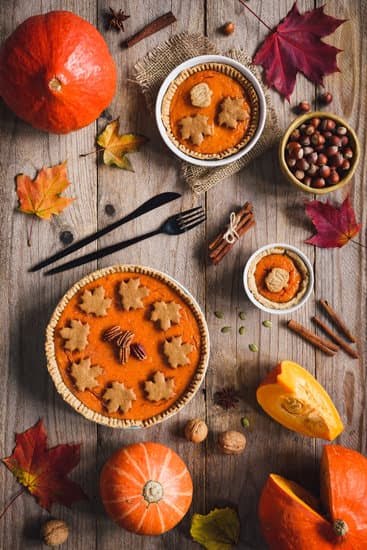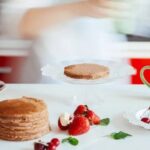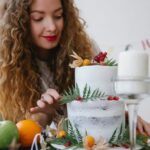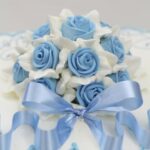Decorating homemade cakes has become more than just a hobby or a skill. It has evolved into a popular trend that many people are embracing. In recent years, there has been a surge in interest and enthusiasm for cake decorating, with countless individuals across the globe taking up the art form.
One of the main reasons why decorating homemade cakes has gained such popularity is the ability to personalize them. Gone are the days of generic store-bought cakes; now, people want their cakes to reflect their own unique styles and personalities. Whether it’s a birthday, wedding, or any special occasion, decorating homemade cakes offers individuals the opportunity to create something truly one-of-a-kind and memorable.
Another significant factor driving this trend is its cost-effectiveness. Ordering professionally decorated cakes can be quite expensive, especially for custom designs. By learning how to decorate homemade cakes, individuals can save a significant amount of money while still achieving stunning results. Plus, the satisfaction that comes from creating something beautiful with your own hands cannot be understated.
Overall, it is clear why decorating homemade cakes has become such a popular trend. The ability to personalize and save money makes it an attractive option for many aspiring bakers and cake enthusiasts alike.
As we delve into the following sections of this article, we will explore in more detail the benefits of cake decorating, essential tools and ingredients required, step-by-step tutorials for beginners, creative ideas to inspire artistic designs, expert tips and tricks for professional-looking results, and much more. So get ready to unleash your creativity and dive into the exciting world of decorating homemade cakes.
Benefits of Decorating Homemade Cakes
Decorating homemade cakes has become a popular trend for various reasons. One of the key benefits of decorating homemade cakes is the ability to personalize them according to one’s preferences and occasions.
Unlike store-bought cakes, which often come in limited designs and flavors, decorating homemade cakes allows individuals to showcase their creativity and make a truly unique statement. Whether it’s a birthday cake or a special anniversary cake, personalization adds an extra touch of thoughtfulness and makes the occasion even more memorable.
In addition to personalization, another significant benefit of decorating homemade cakes is cost-effectiveness. Purchasing a professionally decorated cake from a bakery can often be quite expensive, especially for elaborate designs or larger sizes.
By taking on the task of decorating a homemade cake, individuals have the opportunity to save money while still achieving beautiful results. With some practice and basic tools, it is possible to create stunning decorations that rival those found in high-end bakeries, all at a fraction of the cost.
To successfully decorate homemade cakes, there are several essential tools and ingredients that every aspiring cake decorator should have. These include:
- Cake Decorating Turntable: A rotating turntable provides ease of access while icing and decorating different angles of the cake.
- Piping Bags and Tips: Piping bags allow for precision when adding decorative elements such as borders, flowers, or lettering onto the cake. Different tips offer various patterns and textures.
- Icing Smoother: An icing smoother helps achieve smooth surfaces on frosted cakes by removing any imperfections or air bubbles.
- Food Coloring: A variety of food coloring options are available to achieve vibrant hues for frosting or fondant decorations.
- Fondant Tools: If working with fondant, specific tools like rolling pins or cutters are necessary for shaping and creating intricate designs.
- Edible Decorations: From sprinkles and edible pearls to sugar flowers, having an assortment of edible decorations allows for creative experimentation and customized cake designs.
By having these essential tools and ingredients at hand, individuals can dive into the world of cake decorating with confidence and create stunning homemade cakes that are personalized to their liking and cost-effective.
Essential Tools and Ingredients for Cake Decorating
Decorating a homemade cake can be a fun and creative activity that allows you to personalize your baked creations. However, to achieve the best results, it is important to have the right tools and ingredients at your disposal. In this section, we will provide you with a comprehensive guide on the essential tools and ingredients for cake decorating.
Tools for Cake Decorating
- Spatulas: A good quality offset spatula is essential for frosting cakes smoothly and evenly. It allows you to spread frosting or buttercream in an effortless manner.
- Cake Decorating Turntable: This rotating platform enables you to easily access all sides of the cake while decorating. It offers stability, precision, and makes it easier to create smooth finishes and intricate designs.
- Piping Bags and Tips: Piping bags come in various sizes and materials such as disposable plastic or reusable cloth. You will also need a selection of piping tips in different shapes and sizes to create various designs like flowers, stars, or borders.
- Cake Decorating Brushes: These small brushes are useful for adding details or applying edible dusts or paints onto your cakes.
- Fondant Tools: If you plan on working with fondant, invest in tools like rolling pins, fondant smoothers, cutting wheels, and embossing mats to help shape and decorate your cake with precision.
Ingredients for Cake Decorating
- Frostings: Buttercream frosting is one of the most commonly used frostings for cake decoration due to its versatility and ability to hold shape when piped. Other popular options include cream cheese frosting ganache, whipped cream frosting, or Swiss meringue buttercream.
- Food Coloring: Liquid gel food coloring is preferred by many decorators as it provides vibrant colors without altering the consistency of the icing or batter.
- Fondant: Fondant is an edible icing made from sugar that can be rolled out and draped over cakes for a smooth finish. It is available in a variety of colors or can be tinted to match your desired shade.
- Edible Decorations: Add flair to your cake by using edible decorations such as sprinkles, edible pearls, edible glitter, or even fresh flowers.
- Flavorings: Enhance the taste of your cake with extracts like vanilla, almond, lemon, or orange. These add an extra dimension of flavor to your homemade creation.
By having these essential tools and ingredients on hand, you will be well-equipped to begin decorating your homemade cakes with confidence and creativity. Experiment with different techniques and designs to make your cakes truly unique and show-stopping.
Step-by-Step Tutorial
Decorating a cake can seem like a daunting task, especially if you’re new to cake decorating. However, with the right techniques and a little practice, you can create stunning homemade cakes that look like they came from a professional bakery. In this step-by-step tutorial, we will guide you through the process of decorating a cake like a pro.
Before you begin decorating your cake, make sure it has completely cooled. Decorating a warm cake can cause the frosting to melt or slide off. Once your cake is cooled, you can start by preparing your tools and ingredients. Here are some essential items you’ll need for cake decorating:
- Spatula: A spatula is used for spreading frosting onto the cake and smoothing it out. An offset spatula is ideal for achieving smooth, even layers of frosting.
- Piping Bags and Tips: Piping bags are used for adding decorative designs to the cake using different tips. There are various tips available that allow you to create different shapes and patterns.
- Turntable: A turntable is helpful for rotating the cake while you frost it. This allows for easy and even application of frosting.
- Cake Leveler: A cake leveler helps in creating even layers of cake if you want to stack them.
- Gel Food Coloring: If you want to add color to your frosting or create intricate designs, gel food coloring provides vibrant colors without changing the consistency of the frosting.
Now that you have all your tools ready, let’s move on to the actual decoration process:
- Start by applying a thin layer of frosting called “crumb coat” all over the chilled cake using an offset spatula.
- Place the crumb-coated cake in the refrigerator for about 15 minutes to set.
- Once set, apply another layer of frosting all over the cake using smooth strokes with an offset spatula.
- For additional decorations, such as piping designs or writing, fill the piping bag with frosting and attach the desired tip. Gently squeeze the bag to apply the frosting in your desired pattern.
- You can also use various techniques like using stencils, adding edible decorations, or creating textured patterns with different spatulas.
Remember to take your time and practice patience while decorating your cake. Rome wasn’t built in a day, and similarly, perfect cake decorating skills take time to develop. Don’t be too hard on yourself if your first attempts don’t turn out exactly how you envisioned them. With practice and perseverance, you’ll soon be decorating homemade cakes like a pro.
| Essential Tools | Essential Ingredients |
|---|---|
| Spatula | Frosting |
| Piping Bags and Tips | Cake Base |
| Turntable | Gel Food Coloring |
| Cake Leveler | – |
Unique and Creative Cake Decorating Ideas
One of the most exciting aspects of decorating homemade cakes is the opportunity to showcase your creativity and unleash your imagination. Whether you prefer minimalistic designs or opt for extravagant and jaw-dropping creations, there are countless unique cake decorating ideas that can bring your cakes to life.
If you’re a fan of simplicity and clean lines, minimalistic cake designs may be right up your alley. These designs focus on creating elegant and sophisticated cakes with a modern twist. An example of a minimalistic cake design is a single-tiered cake with smooth fondant icing and a few strategically placed edible flowers. This design emphasizes simplicity while still exuding beauty and finesse.
On the other end of the spectrum, if you love going all out and truly want to wow your guests, extravagant cake designs are perfect for you. These designs involve elaborate decorations, multiple tiers, and an abundance of intricate details. A popular trend is creating multi-tiered cakes with cascading sugar flowers that resemble real blooms. Another extravagant design involves sculpting edible figures or objects that add a dramatic element to the cake.
For those who fall somewhere in between minimalistic and extravagant, there are endless possibilities for unique and creative cake decorating ideas. Consider using different textures like buttercream ruffles or embossed patterns on fondant icing to create visually appealing cakes. Alternatively, you could experiment with unconventional shapes, such as hexagonal or heart-shaped cakes, to make your creations stand out.
To help inspire you even further, here are some additional unique cake decorating ideas:
- Geometric patterns: Use fondant or icing molds to create geometric shapes like triangles or chevron patterns on your cakes.
- Drip effect: Pour ganache or melted chocolate over the top edge of the cake so it drips down the sides for an eye-catching effect.
- Hand-painted details: Paint intricate designs directly onto fondant or buttercream icing for a truly artistic and personalized touch.
- Edible lace: Use edible lace molds to create delicate lace patterns that can be applied to the sides or top of the cake.
- Hidden surprises: Fill the center of your cake with candy, sprinkles, or even a smaller cake for a delightful surprise when it is cut.
Remember, the key to creating unique and creative cake designs is to let your imagination run wild. Experiment with different techniques, colors, flavors, and themes until you find what best expresses your personal style. With so many possibilities available, decorating homemade cakes allows you to take dessert-making to a whole new level.
Expert Tips and Tricks for Perfectly Decorating Homemade Cakes
Decorating a homemade cake can be a fun and rewarding experience. With the right tips and tricks, you can create stunning and professional-looking cakes that will impress your friends and family. In this section, we will explore expert tips and tricks for perfectly decorating homemade cakes.
Planning and Preparation
Before you begin decorating your cake, it is essential to plan and prepare for the process. Start by deciding on the design or theme you want to achieve. This will help guide your choice of colors, patterns, and decorations. Take into consideration the occasion or event for which the cake is being made.
Next, gather all the necessary tools and ingredients needed for the decorating process. Some of the essential tools include a turntable, offset spatula, piping bags, various piping tips, fondant smoother, and an assortment of food coloring gels. It’s also important to have a good quality frosting or buttercream recipe.
Leveling and Crumb Coating
To ensure a smooth surface for your cake decoration, it is crucial to level it properly before frosting. Use a serrated knife or cake leveler to remove any domes or unevenness from the top of each layer.
After leveling, apply a thin layer of frosting all over the cake as a crumb coat. This initial layer acts as a base coat that seals in any loose crumbs and provides stability for subsequent layers of frosting or fondant.
Working with Fondant
Fondant can be an excellent option for achieving a sleek finish on your cake. To work with fondant successfully, ensure that both your hands and work surface are clean and dry.
Roll out the fondant using powdered sugar instead of flour to prevent sticking. Aim for an even thickness throughout. Gently transfer the rolled fondant onto your cake by rolling it around your rolling pin loosely and then unrolling it over the cake.
Smooth out any wrinkles or air bubbles by gently patting and smoothing down the fondant using your hands or a fondant smoother. Trim away any excess fondant using a sharp knife or pizza cutter.
These are just a few expert tips and tricks to help you decorate your homemade cake like a professional. With practice and experimentation, you will become more proficient in creating beautiful cakes that taste as good as they look. Remember to enjoy the process and have fun with your creativity.
Top 5 Cake Decorating Techniques You Need to Try Today
Cake decorating is both an art form and a creative outlet for many bakers and home cooks. Whether you’re a novice or an experienced baker, learning new techniques can elevate your cake decorating skills to new heights. In this section, we will explore the top 5 cake decorating techniques that you need to try today.
- Fondant Decorations: Fondant is a versatile icing that can be rolled out into thin sheets and draped over cakes for a smooth and elegant finish. It can also be molded into various shapes and figures, allowing for intricate and detailed decorations. Fondant decorations are perfect for creating themed cakes or adding a touch of sophistication to any celebration. With practice, you can master working with fondant and take your cake decorating to the next level.
- Buttercream Piping: Buttercream icing is a classic choice for many cake decorators due to its creamy texture and versatility. Piping buttercream allows you to create beautiful designs, intricate patterns, and delicate flowers on your cakes. From simple rosettes to elaborate floral arrangements, buttercream piping adds depth and dimension to your creations. Invest in different piping tips and practice different techniques like swirls, shells, dots, and ruffles to enhance your skills in buttercream piping.
- Airbrushing: Airbrushing is a technique that involves spraying food-safe colors onto the surface of a cake using an airbrush gun. This technique allows for precise control over color intensity and shading, resulting in stunning gradients and realistic effects on your cakes. Airbrushing opens up endless possibilities for creating unique designs, such as ombre effects, watercolor paintings, or even intricate patterns like lace or stencils.
- Mirror Glaze: Mirror glaze is a glossy topping that gives cakes a mesmerizing mirror-like finish. It involves pouring a shiny gelatin-based glaze over the chilled cake, creating a visually stunning effect that is sure to impress. Mirror glaze can be colored to create vibrant and eye-catching designs or left clear for a sleek and sophisticated look. This technique is perfect for special occasions or when you want to create a show-stopping centerpiece.
- Hand Painting: Hand painting on cakes allows you to unleash your creativity and add a personal touch to your creations. With edible food colors and paintbrushes specifically designed for cake decorating, you can create intricate designs, landscapes, or even portraits on the surface of your cakes. Hand painting adds an artistic flair to your cakes and allows you to experiment with different styles, from impressionistic brushstrokes to realistic details.
By trying out these top 5 cake decorating techniques, you will expand your repertoire of skills and be able to create visually stunning and unique cakes. Experiment with different combinations of techniques, utilize various tools, and let your imagination run wild. The key is practice – the more you practice these techniques, the better you become at executing them flawlessly.
| Cake Decorating Technique | Description |
|---|---|
| Fondant Decorations | Versatile icing that can be molded into shapes or draped over cakes for smooth finishes. |
| Buttercream Piping | Piping buttercream icing using different tips to create intricate patterns and designs. |
| Airbrushing | Spraying food-safe colors onto cakes using an airbrush gun for precise shading effects. |
| Mirror Glaze | Glossy gelatin-based glaze poured over chilled cakes for a mesmerizing mirror-like finish. |
| Hand Painting | Cake surface is hand-painted with edible food colors, allowing for creative designs. |
Troubleshooting Common Cake Decorating Mistakes and How to Fix Them
Decorating a homemade cake can be a fun and rewarding experience, but it’s not always without its challenges. In this section, we will explore some common cake decorating mistakes that beginners often encounter and provide you with helpful tips on how to fix them.
One of the most common mistakes in cake decorating is uneven frosting. Sometimes, despite your best efforts, you end up with an uneven layer of frosting on your cake. To fix this, start by chilling the cake in the refrigerator for about 15 minutes to firm up the frosting. Then, use a spatula dipped in hot water to smooth out the surface. The heat from the spatula will help soften the frosting and make it easier to spread evenly.
Another common mistake is air bubbles in the fondant or buttercream icing. These air bubbles can create an unattractive appearance on your cake’s surface. To fix this issue, simply take a pin or toothpick and gently prick the air bubble to release the trapped air. Smooth out the area with a clean finger or a small spatula until it blends seamlessly with the rest of the icing.
For those who are new to cake decorating, piping may seem intimidating. Uneven piping lines are a frequent mistake that many beginners make. To achieve even and straight lines when piping, practice on parchment paper first before moving onto your actual cake. This will allow you to develop a steady hand and get comfortable with controlling the pressure while piping. Additionally, using a straight edge or ruler as a guide can help ensure that your lines are precise and level.
Showcasing Jaw-Dropping Homemade Cake Decorations on Social Media
Social media has become a powerful platform for sharing creativity and inspiring others. When it comes to homemade cake decorations, showcasing your jaw-dropping creations on social media can be especially gratifying. Whether you are an amateur baker or a seasoned pro, sharing your cake designs on platforms like Instagram, Facebook, and Pinterest allows you to connect with a community of like-minded individuals who appreciate the artistry and effort that goes into homemade cake decorating.
One of the benefits of sharing your homemade cake decorations on social media is the ability to inspire others. By posting photos of your beautifully decorated cakes, you can spark creativity in others and encourage them to try their hand at cake decorating. You might also discover new ideas and techniques from other bakers that can further enhance your skills.
Another advantage of showcasing your homemade cake decorations on social media is the opportunity for feedback and constructive criticism. When you receive comments and messages from fellow bakers or cake enthusiasts, it can provide valuable insights and suggestions for improvement. Additionally, positive feedback and support from the online community can boost your confidence and motivate you to continue experimenting with new designs.
To effectively showcase your homemade cake decorations on social media, there are some tips to keep in mind. Firstly, invest time in styling and presentation before taking photographs of your cakes. Clean backgrounds, good lighting, and strategic angles can greatly enhance the visual appeal of your photos. Secondly, use relevant hashtags when posting images to increase visibility and reach a wider audience. Hashtags such as #cakedecorating #homemadecakes #bakinginspiration will attract other enthusiasts searching for similar content.
Final Thoughts
Decorating homemade cakes has become an immensely popular trend in recent years, and it is not difficult to understand why. With the ability to personalize your creations and the cost-effectiveness that comes with baking at home, this trend has captured the hearts of many aspiring bakers and cake enthusiasts.
The benefits of decorating homemade cakes are plentiful. Firstly, it allows for personalization. Whether you are celebrating a special occasion or simply indulging in your culinary creativity, decorating a cake offers a unique opportunity to showcase your personality and style. From choosing the flavors and fillings to designing intricate patterns or themed decorations, each creation becomes a representation of your own vision and taste.
Cost-effectiveness is another major advantage of decorating homemade cakes. While bakeries may charge exorbitant prices for custom-designed cakes, creating your own masterpiece can save you a significant amount of money. By investing in essential tools such as piping bags, tips, turntables, and icing spatulas, you have the freedom to experiment with different techniques without breaking the bank.
To successfully decorate a homemade cake like a pro, it is important to equip yourself with the necessary knowledge and tools. The comprehensive guide provided in this article outlines essential ingredients such as fondant, buttercream icing, food coloring gels, edible decorations, and more. Additionally, expert tips and tricks have been shared throughout the article to help you achieve flawless results every time.
In conclusion, there is immense joy and satisfaction that comes from decorating your own homemade cakes. The ability to express your creativity while saving money makes this trend irresistible for many individuals.
With proper guidance, practice, and experimentation with various techniques showcased in this article’s step-by-step tutorial section and top 5 cake decorating techniques section), you will soon find yourself creating jaw-dropping homemade cake decorations that are worthy of showcasing on social media platforms or impressing friends and family members at gatherings. So go ahead and embark on this delightful journey of cake decorating – it is sure to bring you gratification beyond measure.
Frequently Asked Questions
How to decorate simple homemade cake?
Decorating a simple homemade cake can be a fun and creative process. Start by choosing a theme or color scheme that you want to incorporate into your design. Once you have decided on your theme, consider using various techniques to add visual interest to your cake. For example, you can use different piping tips to create beautiful buttercream flowers or designs.
Adding sprinkles, edible glitter, or colored sugar can also enhance the overall appearance of your cake. Additionally, consider using fresh fruits, such as berries or sliced citrus, as decorative elements. Finally, don’t forget about the presentation – a pretty cake stand or serving platter can elevate the overall aesthetic of your homemade creation.
What can I use to decorate a cake at home?
When it comes to decorating a cake at home, there are numerous ingredients and tools that you can use to make it visually appealing. Buttercream frosting is a popular choice for decorating cakes due to its versatility and ability to hold intricate designs. You can use food coloring to tint the frosting any shade you desire and then pipe it onto the cake using different tips for texture and pattern variation.
Another option is fondant, which can be rolled out and draped over the cake for a smooth and polished look. Fondant can also be shaped into various figures or used for intricate detailing on the cake’s surface. Additional decorative items include colored icing gels for writing or drawing on the cake’s surface, chocolate ganache for drips or drizzles, and edible decorations like flowers made from gum paste or modeling chocolate.
How do you make a homemade cake look pretty?
Making a homemade cake look pretty involves paying attention to both the taste and aesthetics of the final product. To achieve an appealing appearance, start with ensuring that your cake layers are level before stacking them together – this provides a solid foundation for your decoration efforts. Applying an even layer of frosting all over the sides and top creates a smooth canvas for further decoration. Consider using an offset spatula or bench scraper in long strokes around the cake to achieve a clean finish.
Adding visual interest can be achieved through piping techniques, such as rosettes, stars, or simple borders. You can also create texture by using different tools, like combs or brushes, to create patterns in the frosting. Finally, adding edible adornments like fresh flowers, chocolate shavings, or fruit slices can naturally enhance the cake’s vibrant presentation. Remember to keep it balanced and coherent – focus on a central design element while incorporating complementary colors and shapes for an aesthetically pleasing homemade cake.

Welcome to our cake decorating blog! My name is Destiny Flores, and I am the proud owner of a cake decorating business named Cake Karma. Our mission is to provide delicious, beautiful cakes for all occasions. We specialize in creating custom cakes that are tailored specifically to each customer’s individual needs and tastes.





